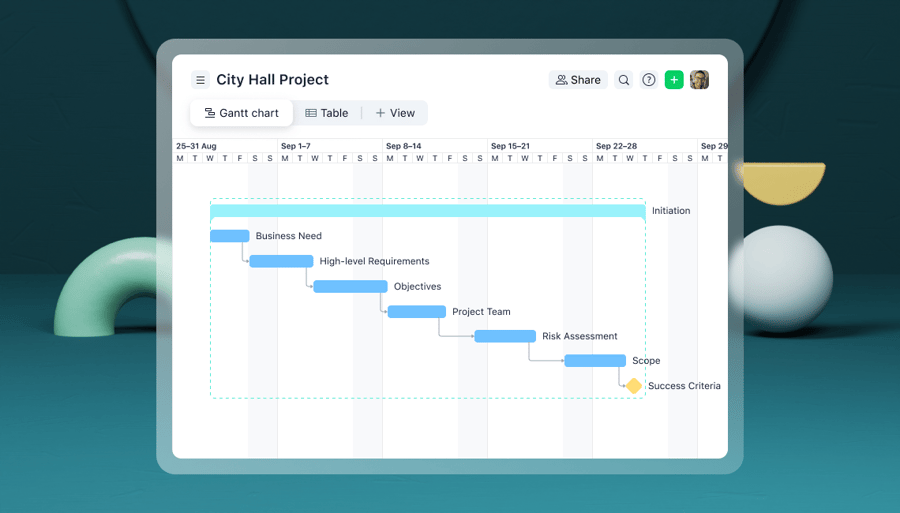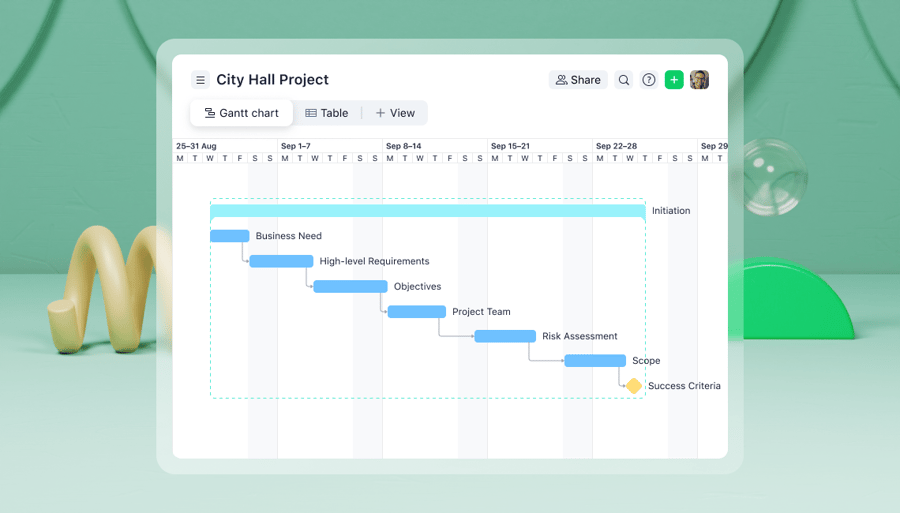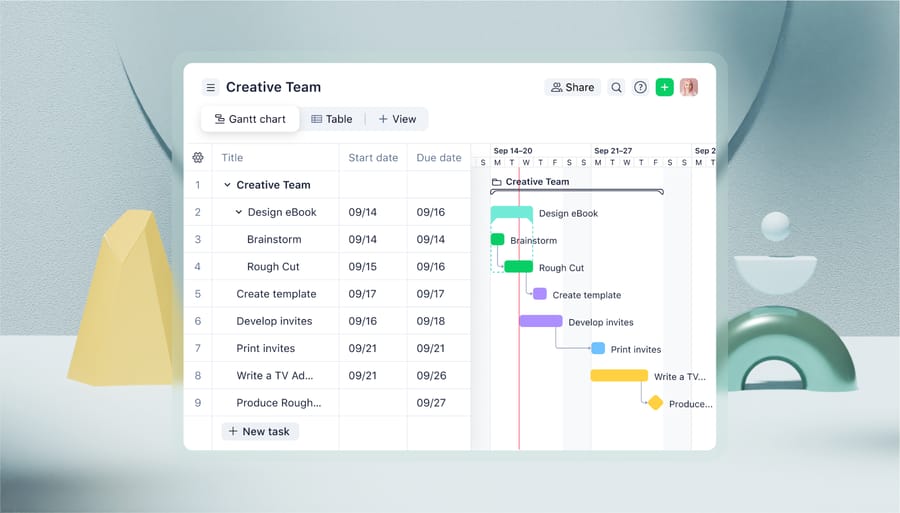Key takeaways:
- What is a Gantt chart? A Gantt chart is a project management tool that visually displays tasks and timelines, helping teams track progress and dependencies effectively.
- What are the benefits of Gantt charts? Gantt charts enhance scheduling, resource allocation, task visualization, project progress monitoring, and accountability within project teams.
- Who uses Gantt charts? Gantt charts are widely utilized in marketing, creative departments, and software development for planning, managing timelines, and coordinating tasks.
- What components make up a Gantt chart? Key components include task lists, timelines, milestones, dependencies, and resource assignments, each playing a crucial role in project organization.
- How can I create a Gantt chart? Start by defining project scope, listing tasks, identifying dependencies, assigning resources, creating milestones, and actively monitoring progress for effectiveness.
Gantt charts have long been one of the best tools for managing projects and ensuring teams stay on schedule. Whether you’re handling a few simple tasks or a complex, months-long initiative, Gantt charts provide a clear visual roadmap to help you and your team bring projects home successfully.
In this piece, we’ll explain what Gantt charts are, why they’re so valuable for project management, and how you can use them to collaborate and stay organized.
What is a Gantt chart?
A Gantt chart is a tool for visualizing project schedules and task progress. Your team can use Gantt charts to plan and track specific activities across the entire project lifecycle.
Gantt charts break down projects into tasks that are displayed as horizontal bars. The position and length of these bars reflect when the task starts and ends, as well as how long it’s scheduled to take. This simple visual layout makes it easy for you to see where specific tasks and the project as a whole stand at a glance.
Many Gantt charts also include task dependencies. These show your team which tasks must be completed before others can begin, so they can spot and address potential bottlenecks early.
You can start exploring Gantt charts whenever you like, thanks to modern project management tools. Your team can use these platforms to build dynamic Gantt charts that automatically adjust as project timelines shift. The best solutions include additional features like automatic dependency tracking, task assignments, and resource management, turning Gantt charts into an even more powerful project management tool.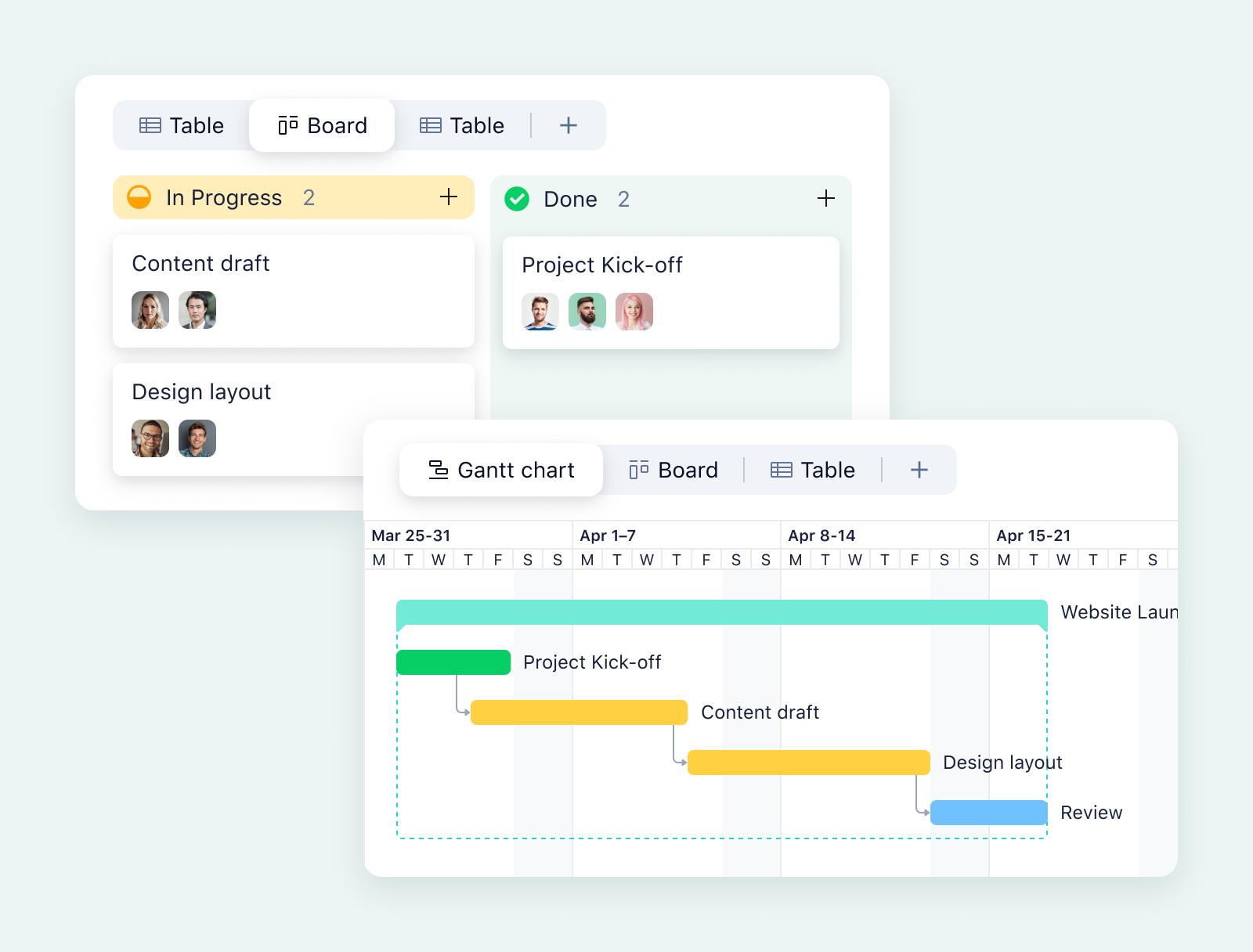
A brief history of Gantt charts
If you rely on Gantt charts, you’re part of a proud project management tradition. Gantt charts date back to the late 19th century, when Polish engineer Karol Adamiecki developed a visual scheduling tool he called a harmonogram. While his work laid the foundation, it was American engineer Henry Gantt who independently refined and popularized the concept in the early 1900s. The charts quickly gained recognition for their ability to simplify project planning and tracking.
Today, Gantt charts remain a cornerstone of project management across industries. Their visual clarity and flexibility make them well-suited to everything from marketing campaigns and software development to construction and event planning. In the digital era, Gantt charts have evolved into dynamic, interactive dashboards that can update in real time.
Gantt chart benefits
Gantt charts have remained a staple in Agile project management for a reason. They translate timelines, responsibilities, and task dependencies into a clear visual format, improving communication and decision making at every level of your organization. Here are just a few of the key benefits Gantt charts offer.
Improved scheduling and time management
Gantt charts make it easier to plan project timelines, ensuring tasks are scheduled logically and deadlines are visible to everyone. With a clear schedule in place, your team will know just how long they have to complete certain tasks and can quickly adapt to any bumps in the road.
More effective resource allocation
Gantt charts empower you to effectively split work between team members and allocate resources more efficiently. You’ll find it much simpler to avoid overloading any one employee or department, spot potential resource shortfalls in advance, and identify when workers or entire teams have more room on their plates.
Clear visualization of task dependencies
Gantt charts are a great way to visualize which tasks depend on others. Your team can then avoid dependency-related delays, side-stepping disruptions caused by uncoordinated handoffs or incomplete work items.
Quick insight into project progress
A Gantt chart gives you a bird’s-eye view of where a project stands. By comparing planned timelines to actual progress, your team can assess whether they’re on schedule and quickly address areas that need attention.
Better alignment and accountability
Gantt charts transparently lay out task assignees and deadlines. Your team is much more likely to follow through with completing key tasks when everyone can see who owns what and understands how their work contributes to project success.

Who uses Gantt charts?
Launching a marketing campaign, managing creative deliverables, or building software? Not to worry — team members in these industries and many more make good use of Gantt charts every day.
Marketing teams
Marketers use Gantt charts to plan campaigns and manage content calendars. From outlining launch timelines for product rollouts to organizing blog and social media schedules, Gantt charts keep marketing initiatives moving forward. They also make it easy to align design, content, and paid media teams around deadlines and campaign milestones.
Creative departments
Creative teams — whether in-house or agency-based — rely on Gantt charts to keep a handle on the many moving parts involved in video productions, design work, and other projects. Through concepting, approvals, and revisions, creatives benefit from the clarity Gantt charts provide. Teams can see how tasks connect, find new opportunities for collaboration, and stay on schedule for final delivery.
Software development
Software teams use Gantt charts to track product roadmaps, development sprints, and release schedules. By breaking down complex builds into smaller tasks and spreading these tasks across developers, Gantt charts help ensure timely feature releases. They also clarify how dependencies — like QA testing or third-party integrations — impact the broader development timeline.
Gantt chart components
Gantt charts bring structure to complex projects through a few key components that organize and display critical information. Each part plays an essential role in helping your team understand who needs to do what when. Let’s break down the major components that make Gantt charts so effective.
Task lists
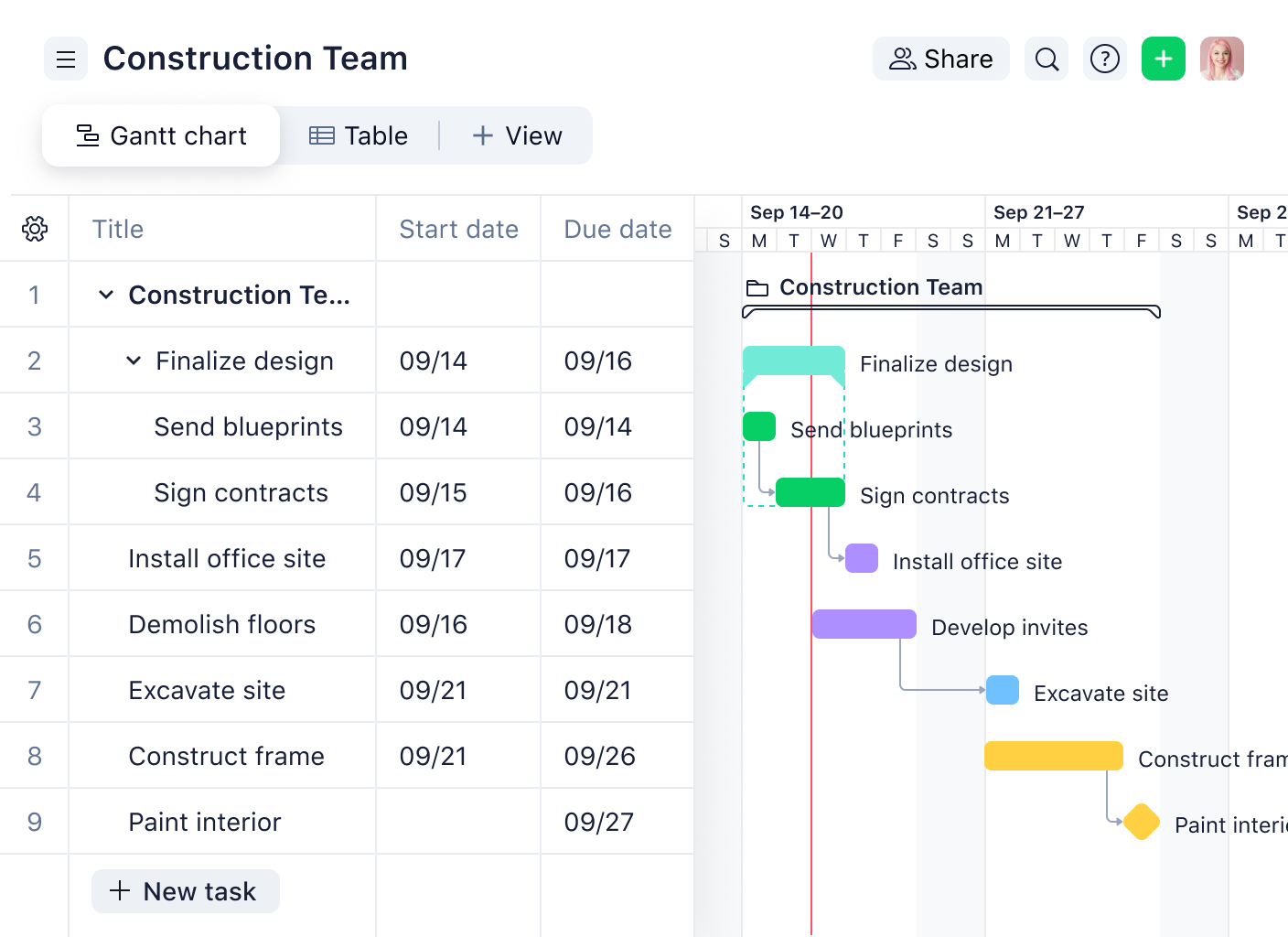
Timelines
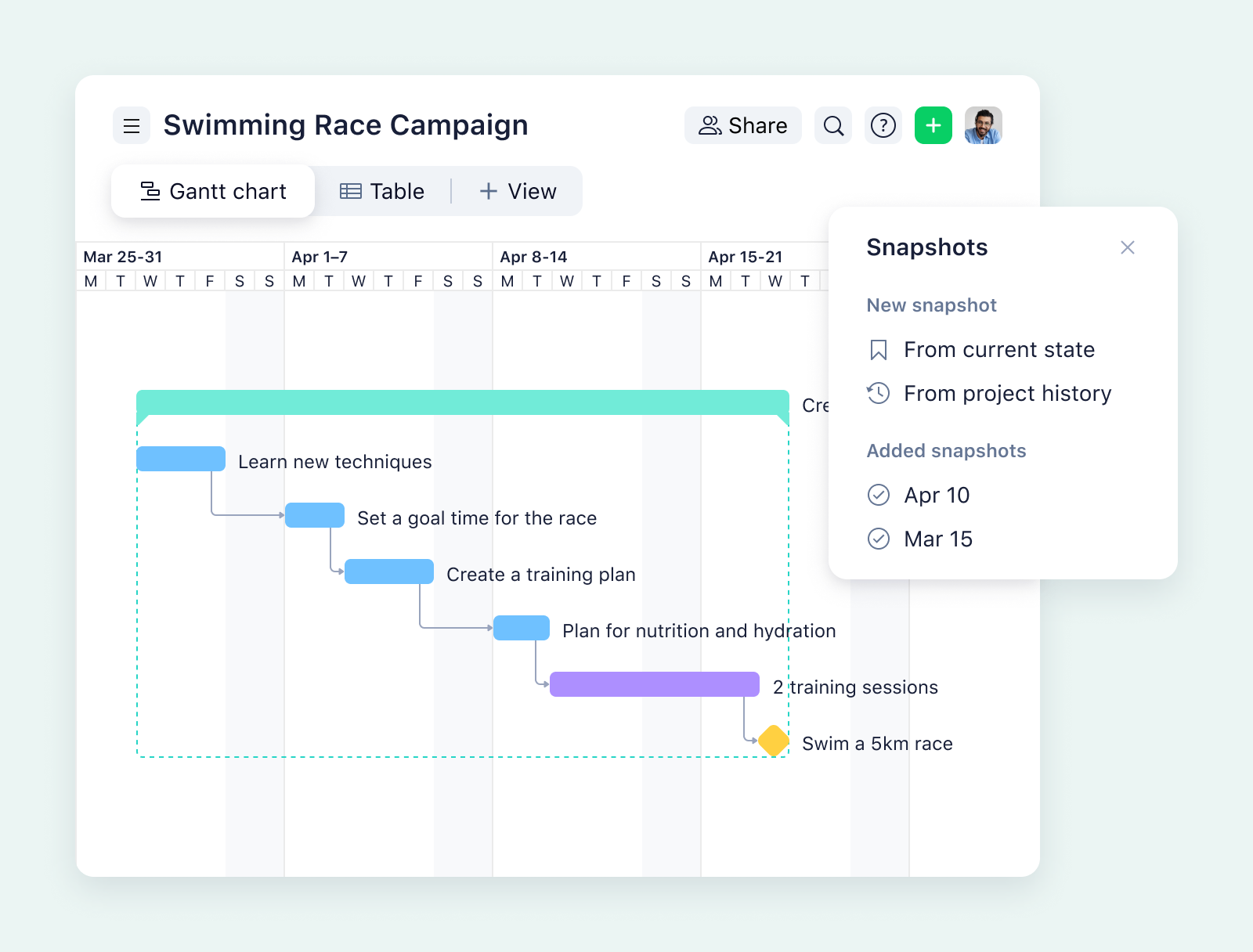
Milestones
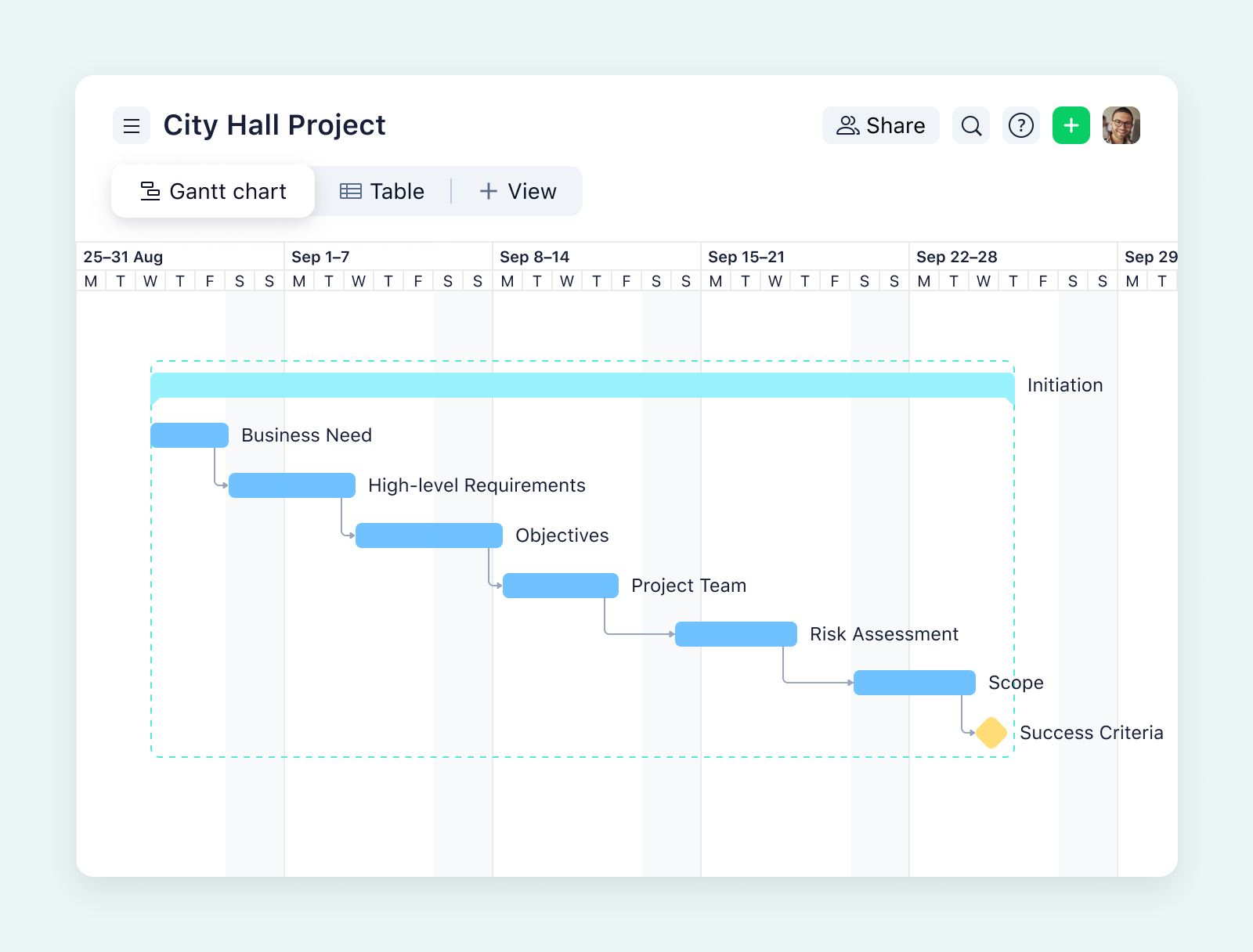
Dependencies
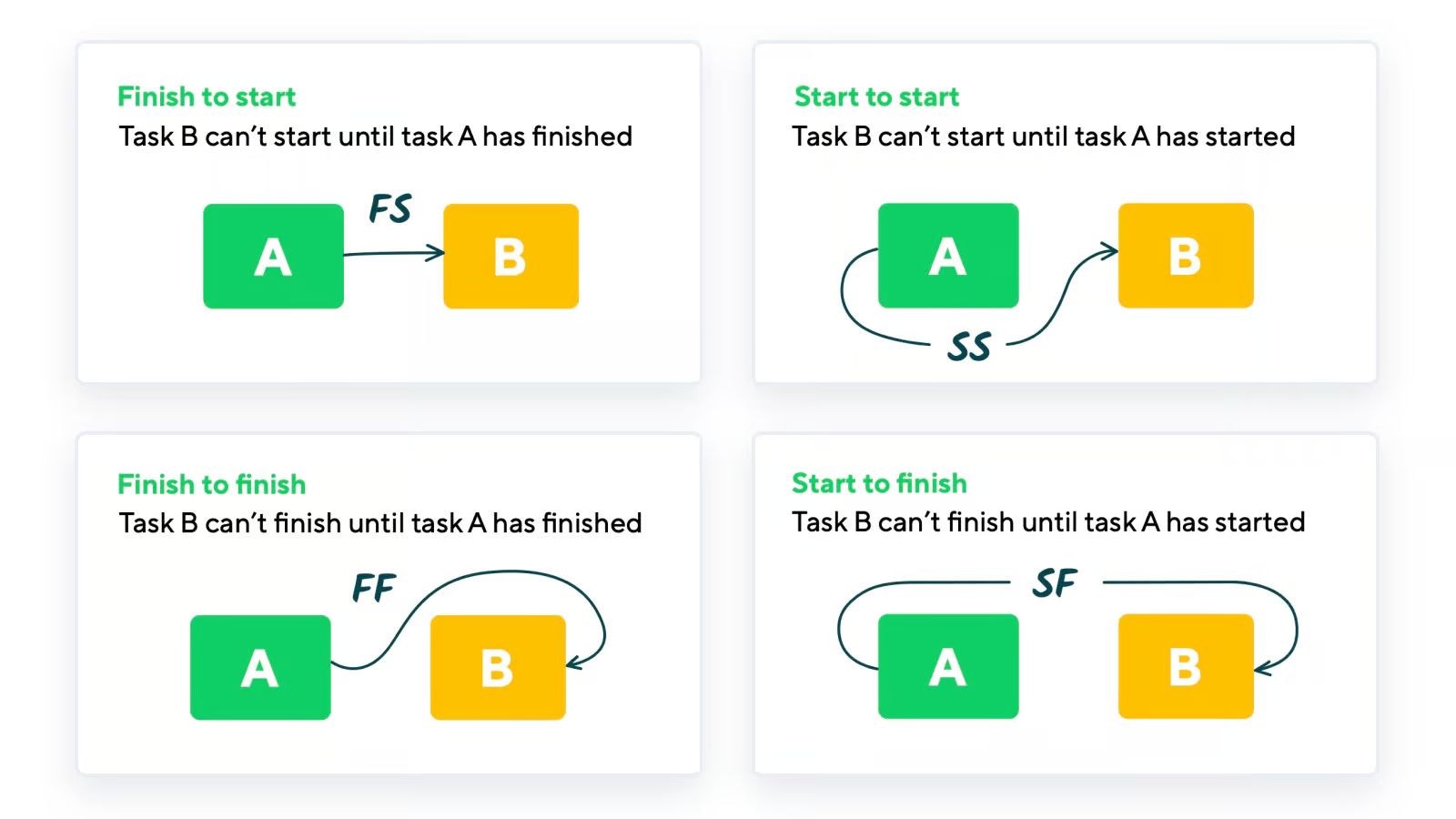
Dependencies show the relationship between tasks, indicating when one task must be completed before another can begin. They’re often represented by lines or arrows connecting tasks on the Gantt chart. For example, a software development team could require “User interface design” to finish before “Front-end development” starts. Your team can then be sure that they’re completing tasks in the right sequence while avoiding potentially costly delays.
Resource assignments
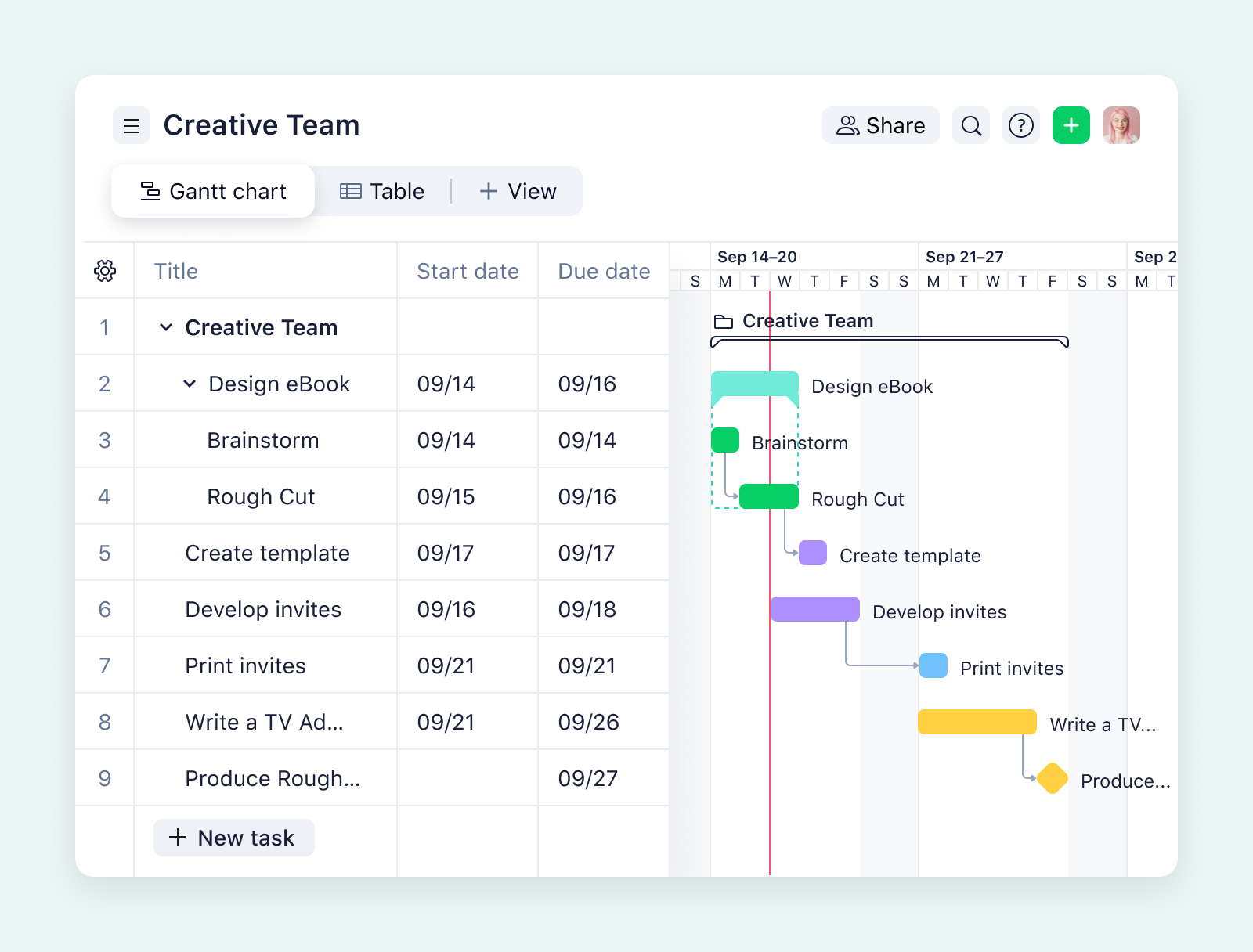
How to create a Gantt chart
Creating a Gantt chart doesn’t have to be a complicated affair. Just follow this step-by-step guide to building a Gantt chart that will carry your team through its next important project and help it avoid common Gantt chart pitfalls.
1. Define project scope
Before you begin building a Gantt chart, take time to clearly define the project scope and anchor your chart to real project needs. This involves outlining the project’s objectives, required deliverables, and anticipated timeline. You should also document your project’s goals and identify constraints — like deadlines, budget, or available personnel. Aligning all stakeholders on these key aspects ensures that everyone understands what success looks like and reduces scope creep as the project moves forward.
2. List tasks and determine durations
With your scope defined, it’s time to break the project into individual tasks and assign estimated durations to each one. Start by listing all the specific actions your team needs to take to achieve the project’s goals. Be as granular as necessary to ensure accountability and avoid confusion.
Once you’ve identified all tasks, estimate how long each will take — measured in hours, days, or weeks, depending on what the task involves. If possible, consult with the team members responsible for each task to ensure your estimates are realistic. For instance, if the task is “Edit promotional video,” and the video editor knows this typically takes five days, that should inform the task’s duration in the Gantt chart. And consider building in additional time for particularly long or complex tasks, so your team isn’t caught off guard when unforeseen issues arise.
3. Identify dependencies
After your tasks are outlined, determine which activities depend on others. These dependencies help sequence your workflow logically and are an essential part of accurately scheduling your project. You can map out these relationships by using arrows or lines in your Gantt chart platform to link dependent tasks. As you do so, be mindful of potential bottlenecks revealed during the process, so you can address them before they slow the project down.
4. Assign resources
Assigning resources to tasks ensures that every activity has someone responsible for its completion — whether it’s a team member, a department, or an external contractor. Proper resource assignment helps balance workloads and prevents scheduling conflicts. In your Gantt chart, you’ll typically assign resources by linking users in your project management platform to specific tasks. If you see that one person is attached to several tasks that overlap, you’ll need to reschedule or reassign that work to avoid delays.
5. Create milestones
Milestones represent major checkpoints or achievements within your project and serve as critical markers of progress. As noted above, milestones usually appear as markers at specific points on the Gantt chart timeline. While tasks often represent relatively discrete units of work, milestones help stakeholders track broader accomplishments. You should use milestones to break your project into meaningful phases. This makes long-term progress more visible while motivating your team members to reach key goals.
6. Monitor progress
Gantt charts are only useful when they reflect the actual status of work. You should actively monitor the chart to track progress in real time, so you can identify delays early and make data-informed adjustments. Periodic reviews with your team are a great way to keep the chart accurate and maintain your momentum.
Features to look for in Gantt chart software
Using a project management platform with built-in Gantt chart functionality saves time, boosts accuracy, and makes it easier to keep your entire team aligned. Project management software lets your team members adjust tasks dynamically, automatically monitor dependencies, and collaborate in real time. But not all tools offer the same capabilities, and choosing the right software starts with knowing which features best meet the needs of your team and your company.
Here are some of the most important features you should look for in your project management solution.
| Bulk rescheduling | Project timelines often shift. Whether you’re adjusting for a delayed deliverable or shifting an entire project phase, bulk rescheduling allows you to modify multiple tasks at once without manually editing each one. Look for a solution that automatically reschedules dependencies and adjusts the project’s timeline around your changes. |
| Easy collaboration | Your project management platform should support real-time collaboration so all team members can view, comment on, and update tasks as the project evolves. Ensure that your tool makes sharing task links simple and automatically notifies team members when task assignees, dates, or other information is updated. |
| Critical path analysis | The best project management solutions make it easy to understand your project’s critical path — the sequence of tasks that define the minimum duration your project can take. Critical path analysis highlights these important tasks so you can prioritize resources accordingly. |
| Ease of use | All the features in the world won’t matter if they’re too complex to use effectively. Adopt a project management platform that offers drag-and-drop functionality for building Gantt charts that meet your needs without needless fuss and frustration. |
| Wide-ranging template library | A comprehensive template library lets your team start realizing the benefits of Gantt charts quickly. Look for a tool that offers templates for different project types, industries, and workflows. |
| Compatibility with common file formats | Your Gantt chart software should play well with the tools your team already uses. Features like import/export capabilities for common file types make it easier to collaborate across platforms without workflow disruption. |
Create Gantt charts and manage projects today
If you’re ready to get going with Gantt charts but aren’t sure how to begin, look no further than Wrike. Wrike lets teams of all sizes build Gantt charts that are customized for their unique workflows, and getting started is a breeze thanks to Wrike’s library of prebuilt templates.
Wrike’s Gantt charts offer complete transparency into project details, tasks, and timelines. You can even easily import data from whatever tools you’re currently using to manage your projects, and the key details will automatically carry over.
Wrike’s powerful Gantt chart software is available online with a free trial, so there’s no reason not to try it out. See how Wrike can break down barriers and help work flow at your organization today.




